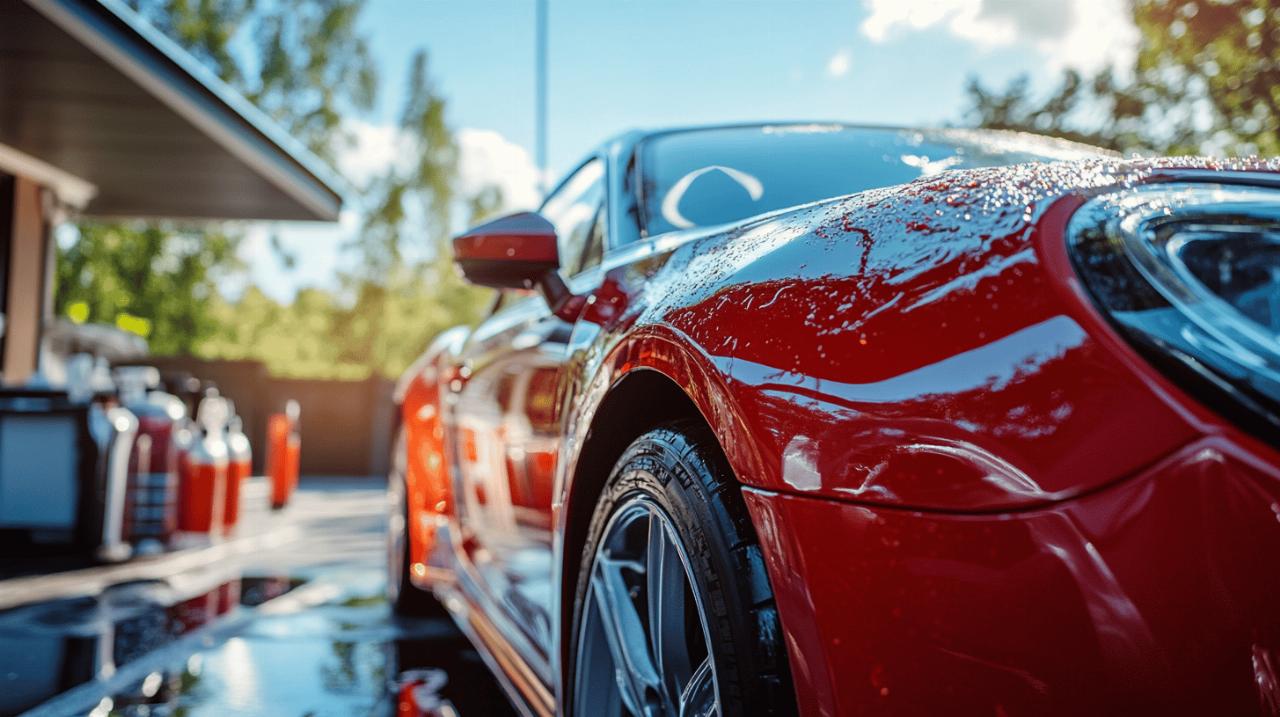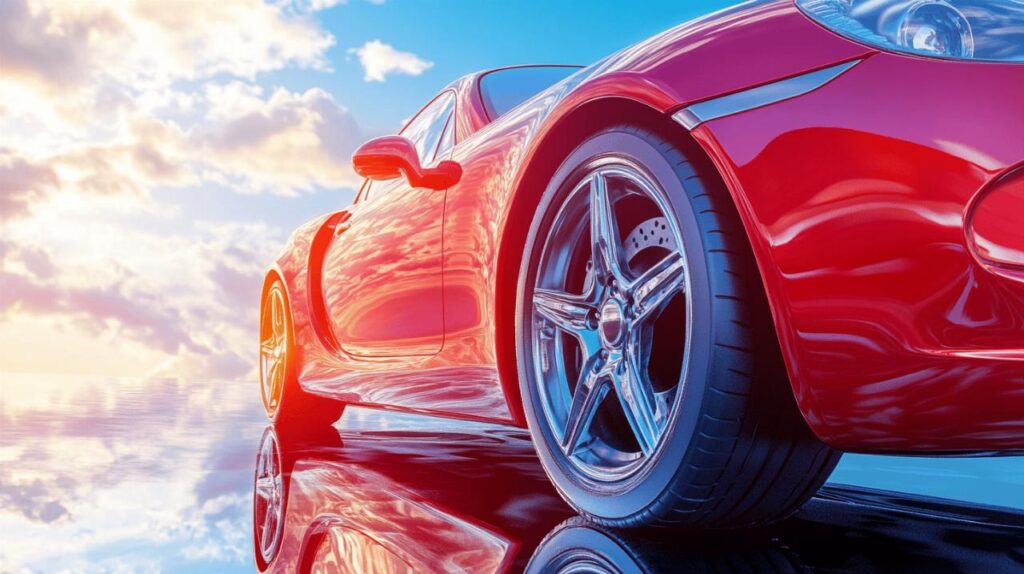Understanding the science behind durable car polishing
The pursuit of a gleaming, showroom-quality finish for your vehicle requires more than just occasional buffing. True automotive enthusiasts understand that achieving lasting results demands knowledge of the underlying principles. Professional detailers at https://www.kammann-automobile.de/ consistently emphasize that comprehending the science behind polishing is fundamental to maintaining your vehicle’s appearance long-term. This knowledge forms the foundation for every successful detailing project, ensuring your efforts yield maximum durability.
Paint composition and how polishing affects it
Modern automotive paint systems typically consist of multiple layers – primer, base coat (colour), and clear coat. The clear coat serves as a protective shield against environmental damage while providing that coveted glossy appearance. When you polish a vehicle, you’re primarily working with this clear coat layer. Car detailing experts explain that polishing actually removes a microscopic layer of this clear coat, eliminating imperfections, oxidation, and minor scratches. Understanding this process helps prevent over-polishing, which can thin the clear coat excessively and compromise long-term protection.
Different Types of Polishes and Their Longevity Factors
The market offers various polish formulations, each with specific applications and durability characteristics. Compounds range from aggressive cutting formulations that remove significant imperfections to finishing polishes that enhance gloss without heavy material removal. Premium brands like Dr. Beasley’s develop specialized formulations that balance correction ability with paint preservation. The longevity of your polishing efforts often correlates directly with the quality of products used and their appropriate application for your specific paint condition. Professional detailers recommend selecting products based on your paint’s current state rather than price point alone.
Professional-grade products worth the investment
While budget-friendly options might seem appealing, experienced detailers consistently report that professional-grade products deliver superior longevity and results. Paint correction specialists like Mike Phillips emphasize that quality materials significantly impact both the immediate finish and how long that finish endures. Making informed investments in premium detailing supplies ultimately saves time and money by reducing the frequency of required maintenance.
High-quality compounds vs budget alternatives
Professional-grade compounds typically contain refined abrasives that break down consistently during use, providing predictable cutting power that diminishes gradually to a fine polish. This controlled abrasion pattern results in a more uniform finish without introducing new swirls or marring. Budget alternatives often contain inconsistent abrasive particles that can leave uneven results requiring additional correction steps. The performance difference becomes particularly evident during extensive paint correction projects, which industry experts note can take between 12-17 hours for a complete process including washing, decontamination, polishing, and protection.
Specialist sealants that enhance polish duration
After achieving that perfect polish, protecting your work becomes paramount. Specialist sealants create a barrier between your freshly polished paint and environmental contaminants. Modern ceramic coatings and synthetic sealants offer protection measured in months rather than weeks, with some premium formulations providing durability extending beyond a year with proper maintenance. These advanced protection products bond chemically with the paint surface, creating a hydrophobic layer that repels water, dirt, and contaminants while enhancing the depth and gloss achieved through polishing.

Proper surface preparation techniques
Professional detailers unanimously agree that surface preparation largely determines polishing longevity. Even the most expensive products and techniques cannot overcome poor preparation. Following systematic pre-polishing procedures establishes the foundation for durable results that maintain their appearance through seasonal changes and regular use conditions.
Thorough cleaning methods before polishing
Effective polishing requires working with an impeccably clean surface. This means not just removing visible dirt but eliminating embedded contaminants and residues that compromise polish adhesion. The detailing experts at automotive care centers recommend a multi-step washing process including pre-rinse, contact washing with pH-balanced shampoo, and thorough rinsing with filtered water when possible. Avoiding washing in direct sunlight prevents premature drying and water spotting that can create additional work during the polishing phase.
Clay Bar Treatment and Its Impact on Polish Adhesion
Clay bar decontamination represents a critical step often overlooked by enthusiasts new to detailed car care. This process removes bonded contaminants that washing alone cannot eliminate – industrial fallout, rail dust, tree sap residue, and embedded environmental pollutants. Mike Phillips specifically recommends incorporating clay bar treatment during the wash phase to streamline the overall process. When your paint surface feels completely smooth after clay treatment, polishes can make direct contact with the clear coat rather than sitting atop contaminants, dramatically improving both results and longevity.
Mastering application methods for maximum durability
Even perfect products applied to well-prepared surfaces can disappoint without proper application techniques. Developing methodical, consistent application habits transforms average results into exceptional ones. Vehicle restoration specialists emphasize that patience during application pays dividends in durability, with rushed work invariably requiring premature reapplication.
Machine polishing techniques that extend results
Professional detailers primarily rely on machine polishing for consistent, durable results. Experts suggest using rotary or gear-driven orbital polishers for efficient correction, particularly when working on harder European clear coats. Developing a systematic approach proves crucial – experienced detailers count section passes aloud to ensure consistent coverage and pressure. Starting from the highest points of the vehicle and working downward prevents contamination of already-polished areas. For larger panels, beginning in the center and working outward maintains control and ensures even product distribution.
Hand polishing secrets for detailed areas
While machines excel at processing large panels efficiently, hand polishing remains indispensable for intricate areas like door jambs, around badges, and tight contours. Automotive care professionals recommend microfiber applicators rather than traditional terry cloth for these areas, as they reduce the risk of introducing new scratches. Consistent, moderate pressure in a circular motion followed by straight-line finishing strokes achieves optimal clarity. Taking time with these detailed areas distinguishes truly exceptional results from merely good ones, with the additional attention significantly extending the uniform appearance of your polishing work.
Environmental protection strategies
Even perfect polishing technique cannot withstand unmitigated environmental exposure. Implementing protective strategies preserves your investment of time and materials. Paint protection specialists emphasize that environmental defense measures form a critical component of any comprehensive detailing strategy.
Garage storage benefits for polished vehicles
Indoor storage provides the single most effective protection for your freshly polished vehicle. Garage environments shield your paintwork from harsh UV radiation that accelerates clear coat degradation and causes polishes and sealants to break down prematurely. Before beginning extensive polishing work, detailing experts like Mike Phillips specifically recommend organizing your garage to accommodate your vehicle comfortably. This preparation ensures your investment in time and materials yields maximum returns through reduced environmental exposure.
Protective Covers and Their Role in Maintaining Shine
When garage storage proves unavailable, quality vehicle covers offer significant protection. Modern covers feature breathable, UV-resistant fabrics with soft inner linings that won’t abrade polished surfaces. Professional detailing services advise selecting covers specifically designed for your vehicle model to prevent wind-induced movement that can introduce surface marring. For optimal protection, ensure the vehicle surface is clean before applying the cover, as trapped dirt particles can act as abrasives during any movement.
Maintenance routines to preserve your polish
Establishing consistent maintenance protocols significantly extends the life of your polishing efforts. Professional detailers emphasize that regular, gentle maintenance prevents the need for frequent intensive corrections. Developing these habits transforms car care from occasional major projects into manageable routine activities that maintain your vehicle’s appearance with minimal effort.
Proper washing techniques that won’t degrade polish
Improper washing represents the most common cause of premature polish degradation. Automotive care specialists recommend using the two-bucket method with grit guards to prevent reintroducing contaminants onto your paint surface. Selecting pH-neutral shampoos specifically formulated for automotive finishes prevents stripping protective sealants. Always washing from top to bottom maintains a clean working surface and prevents dragging heavier contaminants across your polished finish.
Touch-up procedures between major polishing sessions
Between comprehensive polishing sessions, spray detailers and quick enhancement products help maintain appearance and protection. These products contain mild cleaning agents and protection boosters that remove light contamination while reinforcing existing sealants. Professional detailers recommend applying these products after regular washing while the surface remains cool and out of direct sunlight. This simple addition to your maintenance routine can extend the life of your polishing work by months, reducing the frequency of more intensive correction procedures.

